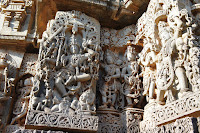Food: ★★★★★
Service: ★★★★★
Ambience: ★★★★☆
This restaurant which is located on CMH Rd and is only 2 mins walk from our house had been on our radar for a while. And, one day one of our Indian friends mentioned how great the food was there, we immediately decided to go. Indeed, it was great! And to our joyful surprise, the guy who used to host the restaurant called Chamomile (which I never got around to write about it before it sadly got shut down) that we loved was there as a new host! We were happy to see him again there, and he was so kind to let us know the popular dishes.

 For the first appetiser, we got Achari Paneer Tikka. Paneer was nicely grilled but so soft and rich. Loved it! We also got a non-veg appetizer called Peshwari Murgh Tikka. Chicken chunks were again very tender and juicy. For the main dish, we went for Saagwala Ghosht. The creamy spinach puree was just excellent which of course satisfied my hubby very much. To me, it was a bit too creamy, but I liked the taste of it. The Jeera rice was wonderful as well as Butter Garlic Naan.
For the first appetiser, we got Achari Paneer Tikka. Paneer was nicely grilled but so soft and rich. Loved it! We also got a non-veg appetizer called Peshwari Murgh Tikka. Chicken chunks were again very tender and juicy. For the main dish, we went for Saagwala Ghosht. The creamy spinach puree was just excellent which of course satisfied my hubby very much. To me, it was a bit too creamy, but I liked the taste of it. The Jeera rice was wonderful as well as Butter Garlic Naan.

For the dessert, we tried Backed Gulab Jamun. Sweeeeet!
Service: ★★★★★
Ambience: ★★★★☆
This restaurant which is located on CMH Rd and is only 2 mins walk from our house had been on our radar for a while. And, one day one of our Indian friends mentioned how great the food was there, we immediately decided to go. Indeed, it was great! And to our joyful surprise, the guy who used to host the restaurant called Chamomile (which I never got around to write about it before it sadly got shut down) that we loved was there as a new host! We were happy to see him again there, and he was so kind to let us know the popular dishes.

This restaurant serves Northern Indian cusines. According to the host, a lot of the ingredients are shipped directly from New Delhi area. He also told us that the restaurant is famous for their cheese dishes, and especially the cottage cheese (Paneer) dishes are their signature ones. Since we are not a huge eater, we got two appetisers, one main dish, and a dessert. And, it filled us up.

For the dessert, we tried Backed Gulab Jamun. Sweeeeet!
















